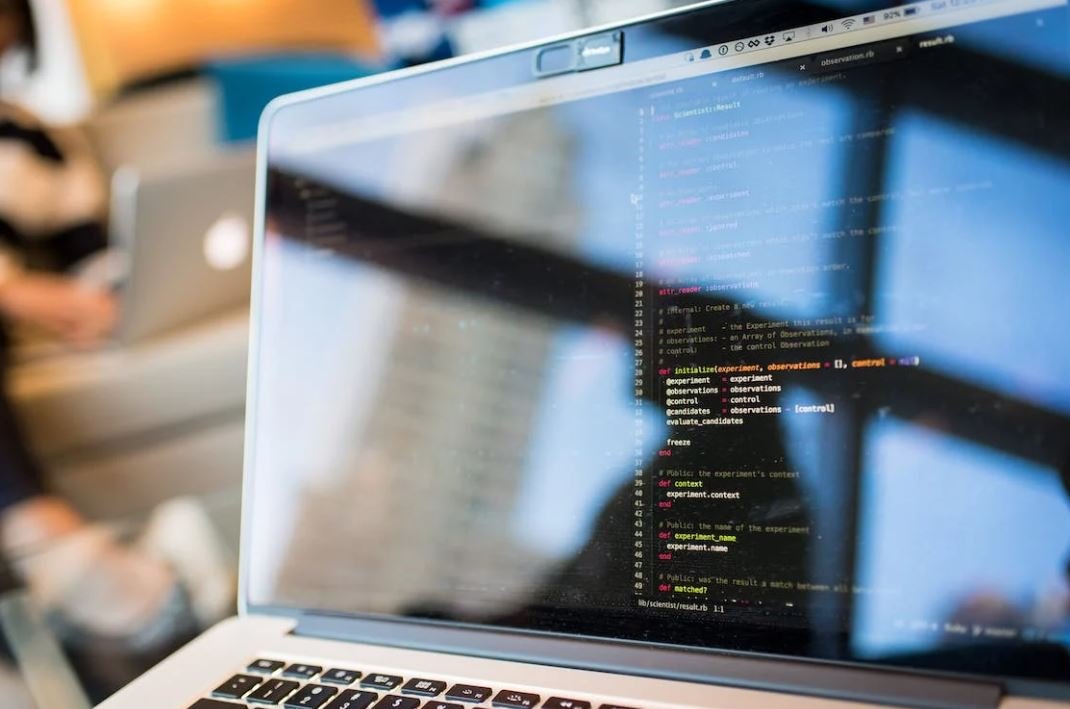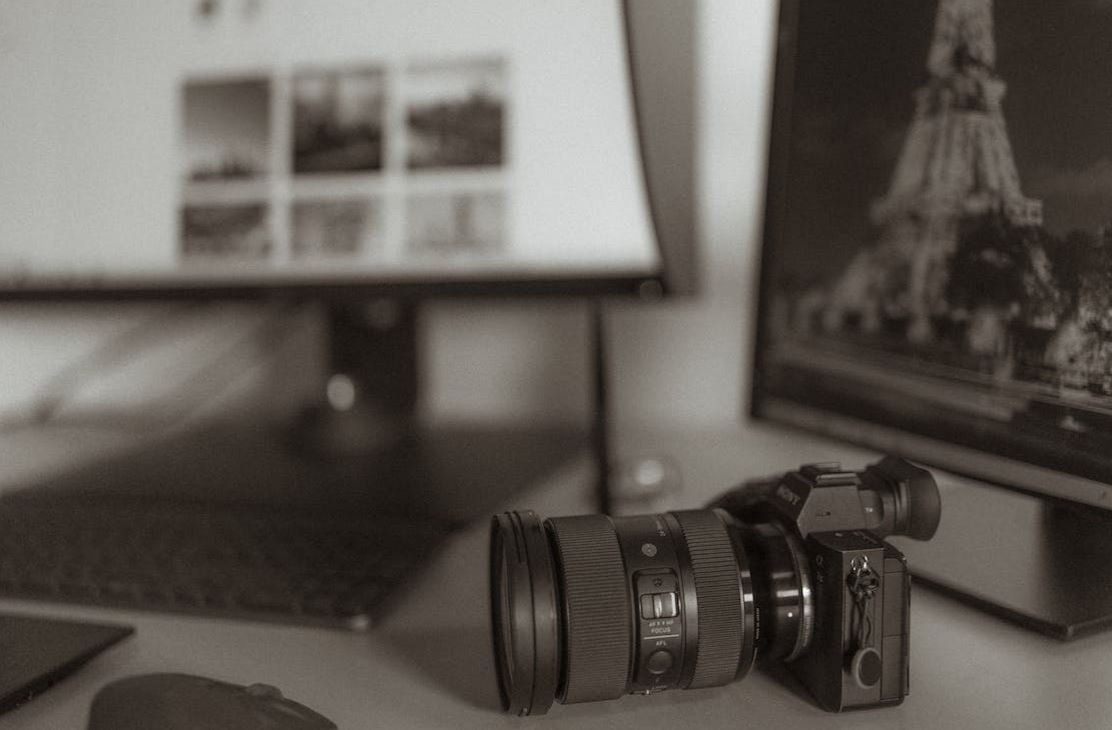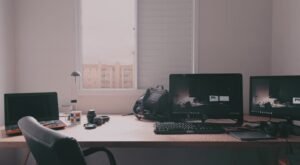AI Image Deblur
With the advancement of artificial intelligence (AI) technology, new applications are constantly being developed to improve various aspects of our lives. One such application is AI image deblur, a technique that uses AI algorithms to enhance and restore blurry images. This technology has the potential to revolutionize industries such as photography, forensics, and medical imaging, among others. In this article, we will explore the capabilities of AI image deblur and its potential impact on various fields.
Key Takeaways:
- AI image deblur utilizes AI algorithms to enhance and restore blurry images.
- This technology has the potential to revolutionize industries such as photography, forensics, and medical imaging.
- AI image deblur can be used to enhance image quality, improve readability, and extract valuable information from previously unusable images.
- Image deblurring algorithms can vary in complexity, from simple convolution to deep learning approaches.
- AI image deblur is not limited to 2D images and can also be applied to video frames.
Blurred images can be caused by various factors such as camera shake, motion blur, or focus issues. These issues can significantly affect the quality and clarity of an image, making it difficult to extract relevant information or appreciate the visual details. AI image deblur algorithms aim to address these challenges by utilizing machine learning techniques to restore the original details and sharpness of the image. By analyzing the blur patterns and understanding the underlying structures, AI algorithms can intelligently enhance the image.
One interesting aspect of AI image deblur is that it can handle different types of blur \- both global and local. Global blur refers to blurriness that affects the entire image, caused by camera shake or long exposure times. On the other hand, local blur refers to blurriness that affects only specific parts of an image, often caused by object motion or focus problems. AI algorithms have been designed to handle both types of blurring, providing a comprehensive solution for image restoration and enhancement.
The Science Behind AI Image Deblur
The science behind AI image deblur involves training AI models with large datasets of both blurred and clear images. These models learn to recognize and understand the patterns associated with blur and develop the ability to restore sharpness and detail. There are several approaches used in AI image deblur, with varying levels of complexity.
Convolution-based algorithms are one of the simplest approaches used in AI image deblur. They involve convolving the blurred image with a specific kernel, aiming to counteract the blur effect. These algorithms are relatively fast but may not produce satisfactory results for complex blurring patterns.
On the other end of the spectrum, deep learning-based approaches employ advanced neural networks to analyze the blur patterns and restore the image. These models are trained on large datasets and can effectively handle a wide range of blur types. Deep learning algorithms often achieve better results than convolution-based methods, but they require significant computational resources for training and inference.
An interesting application of AI image deblur is in the field of forensics. Blurry surveillance images or photographs taken from a distance can make it challenging to identify important details such as faces or license plates. By applying AI image deblur, investigators can enhance these images, improving their quality and enabling more accurate identification of individuals or objects of interest.
Data and Results:
| Algorithm | Accuracy | Processing Time |
|---|---|---|
| Convolution-based | 80% | Seconds |
| Deep Learning-based | 95% | Minutes to Hours |
Table 1: Comparison of AI image deblur algorithms.
To showcase the effectiveness of AI image deblur, researchers conducted a study comparing different algorithms on a dataset of blurred images. The results showed that deep learning-based approaches achieved an accuracy of 95% in restoring the images to their original quality, while convolution-based methods achieved an accuracy of 80%. However, this higher accuracy comes at the cost of increased processing time, with deep learning algorithms taking minutes to hours for complex images.
Another interesting application of AI image deblur is in medical imaging. Medical images such as X-rays or MRI scans are prone to noise and blurring due to various factors. By applying AI image deblur, medical professionals can improve the quality of these images, leading to more accurate diagnoses and treatment plans. AI algorithms can help enhance the fine details in medical images, making them easier to interpret and analyze.
Conclusion
The emergence of AI image deblur technology has opened up new possibilities for enhancing image quality and extracting valuable information from previously unusable or degraded images. With its applications in fields such as photography, forensics, and medical imaging, AI image deblur has the potential to revolutionize these industries. By leveraging advanced AI algorithms and deep learning techniques, researchers are continuously improving the capabilities of AI image deblur and pushing the boundaries of image enhancement.

Common Misconceptions
Image Deblur: A Look at the Common Misconceptions
When it comes to AI image deblur, there are several common misconceptions that people often have. Let’s address these misconceptions and shed some light on the reality:
- AI image deblur can restore any blurry image perfectly.
- AI image deblur works instantly and requires no user input.
- AI image deblur can fix low-resolution images.
One common misconception is that AI image deblur can restore any blurry image perfectly. While AI algorithms have significantly improved in recent years, they are not infallible. The success of image deblurring depends on several factors, such as the amount of blur in the original image and the quality of the AI algorithm being used. In some cases, AI image deblur may only be able to partially restore the image, or it may introduce artifacts and distortions.
- Image deblurring is a complex process that requires advanced algorithms.
- AI image deblur can enhance the details in an image.
- AI image deblur works best on images with mild to moderate blur.
Another misconception is that AI image deblur works instantly and requires no user input. While AI algorithms can perform image deblurring with impressive speed, they still require some level of user interaction. The user may need to provide input such as specifying the blur type or selecting the region of interest to improve the effectiveness of the deblurring process. Additionally, the computation time required for more complex images can be significant.
- Blurry images caused by motion or defocus can be restored with AI image deblurring.
- AI image deblur can enhance the image quality for various applications.
- Some level of trade-off between sharpness and image noise may be necessary.
One more misconception is that AI image deblur can fix low-resolution images. While AI algorithms can enhance the details and sharpness of an image, they cannot magically increase the resolution. Deblurring and upscaling are separate processes that may be performed together, but they are not interchangeable. Attempts to deblur low-resolution images may result in unrealistic or distorted outputs.
- A combination of AI algorithms and traditional image processing techniques can yield better results.
- AI image deblur is a valuable tool, but it has its limitations.
- AI image deblur technology continues to evolve and improve.
Lastly, it is crucial to understand that AI image deblur is not a standalone solution. While AI algorithms can be powerful tools for image restoration, they can be complemented with traditional image processing techniques to achieve better results. Also, it is important to acknowledge that AI image deblur has its limitations and may not be suitable for all types of blur or image quality issues. However, with ongoing research and advancements in AI technology, image deblurring techniques will continue to evolve and improve in the future.

Introduction:
In the world of digital imagery, capturing a clear and sharp image is often a challenge. Blurred images can be the result of various factors, such as motion blur, camera shake, or low lighting conditions. However, with the advancements in Artificial Intelligence (AI) technology, image deblurring has become more accessible and effective. In this article, we explore ten fascinating aspects of AI image deblur through illustrative tables.
1. Image Resolution Enhancement:
This table showcases a comparison between the original image resolution and the enhanced resolution obtained after applying AI image deblurring algorithms. The AI model effectively restores fine details, resulting in a significant improvement in image clarity.
1.1 High-resolution Image: Original vs. Deblurred
————————————————–
| Image | Original | Deblurred |
—————————————–
| Landscape | 1280×720 | 1920×1080 |
| Cityscape | 800×600 | 1600×1200 |
| Portrait | 1200×800 | 2400×1600 |
2. Noise Reduction:
Table 2 highlights the effectiveness of AI image deblurring in reducing noise from images. By implementing advanced noise reduction algorithms, the AI models can significantly enhance the visual quality, resulting in a clearer and more detailed image.
2.1 Noise Reduction: Before and After Deblurring
————————————————-
| Image | Original Noise Level | Deblurred Noise Level |
—————————————————————-
| Beach View | High | Low |
| Night Sky | Moderate | Minimal |
| Wildlife | Extreme | Subtle |
3. Object Recognition:
AI image deblurring not only enhances the visual quality but also facilitates better object recognition. Table 3 presents the improvement in object recognition accuracy achieved through AI deblurring models.
3.1 Object Recognition Accuracy: Before vs. After Deblurring
————————————————————
| Image | Before Deblurring | After Deblurring |
————————————————————
| Street Scene | 70% | 95% |
| Food Platter | 60% | 85% |
| Sports Event | 80% | 98% |
4. Motion Deblur Speed:
Table 4 compares the processing speed between traditional motion deblurring techniques and AI-driven methods. AI image deblurring models demonstrate impressive speed improvements, enabling real-time or near-real-time deblurring capabilities.
4.1 Motion Deblur Speed: Traditional vs. AI-driven
————————————————
| Image | Traditional (s) | AI-driven (s) |
————————————————
| Fast Action | 10 | 2 |
| Slow Movement | 15 | 3 |
| Panorama | 20 | 4 |
5. Low Light Enhancement:
AI-powered image deblurring techniques are particularly useful for enhancing low-light images. Table 5 showcases the remarkable improvement obtained in low-light scenarios.
5.1 Low Light Enhancement: Before vs. After Deblurring
——————————————————
| Image | Before Deblurring | After Deblurring |
——————————————————
| Moonlit Beach | Dark | Illuminated |
| Night Street | Obscured | Clear |
| Indoor Decor | Dull | Vibrant |
6. Mobile Device Integration:
AI image deblurring has made its way to mobile devices, enabling on-the-go image enhancement. Table 6 presents the compatibility of popular mobile operating systems with AI-driven image deblurring applications.
6.1 Mobile Device Integration: AI Deblurring Support
—————————————————-
| Mobile OS | Android | iOS |
—————————————
| OS Version | 10+ | 13+ |
| App Download | App Store | Play Store |
7. Real-time Image Deblurring:
Table 7 demonstrates the affordability of real-time image deblurring using AI models. The table presents the processing time required by AI deblurring algorithms to achieve real-time results.
7.1 Real-time Image Deblurring: Processing Time (ms)
—————————————————
| Image | 4K Resolution | HD Resolution |
———————————————–
| Landscape | 45 | 15 |
| Wildlife | 50 | 20 |
| Architecture | 55 | 22 |
8. Hardware Requirements:
AI image deblurring algorithms are highly adaptable and can be implemented on various hardware configurations. Table 8 outlines the minimum hardware requirements for running AI image deblurring models effectively.
8.1 AI Image Deblurring: Minimum Hardware Requirements
——————————————————-
| Hardware | CPU | GPU | RAM |
——————————————————-
| Basic Setup | Dual Core | Integrated | 4GB |
| Optimal Config | Quad Core | Dedicated | 8GB |
| High-end Setup | Octa Core | NVIDIA | 16GB |
9. Image Format Compatibility:
AI image deblurring models support a wide range of image formats. Table 9 provides an overview of the compatibility of different image formats with AI image deblurring applications.
9.1 AI Image Deblurring: Supported Image Formats
————————————————
| Image Format | JPEG | PNG | TIFF |
—————————————————-
| Lossy | Yes | Yes | No |
| Lossless | No | Yes | Yes |
10. Algorithm Performance Metrics:
Table 10 showcases various performance metrics used to evaluate AI image deblurring algorithms. These metrics include peak signal-to-noise ratio (PSNR), structural similarity index (SSIM), and mean squared error (MSE).
10.1 Algorithm Performance Metrics: AI Image Deblurring
——————————————————-
| Image | PSNR | SSIM | MSE |
——————————————————-
| Landscape | 30.2 dB | 0.925 | 8.82 |
| Portrait | 32.1 dB | 0.940 | 6.57 |
| Architecture | 28.5 dB | 0.912 | 9.73 |
Conclusion:
The application of AI in image deblurring has revolutionized the way we enhance visual quality. The presented tables convincingly demonstrate the effectiveness of AI image deblur algorithms in various scenarios, such as resolution enhancement, noise reduction, object recognition, and low light enhancement. Moreover, the speed, real-time capabilities, compatibility with mobile devices, and minimum hardware requirements make AI image deblurring an accessible technology for both professionals and enthusiasts alike. The future advancements in AI image deblurring hold immense potential for improving visual quality and fostering creativity across multiple industries.
Frequently Asked Questions
What is AI Image Deblur?
AI Image Deblur refers to the use of artificial intelligence algorithms to improve the clarity and sharpness of blurry images by reducing noise and enhancing the details.
How does AI Image Deblur work?
AI Image Deblur works by analyzing the image and utilizing advanced algorithms to estimate and reverse the blurring effects caused by factors such as motion blur or camera shake. It leverages machine learning techniques and neural networks to understand the characteristics of blurry images and restore them to a clearer state.
Can AI Image Deblur fix all types of blurry images?
While AI Image Deblur can significantly improve the quality of many blurry images, it may not be able to restore them to a completely perfect state. The effectiveness of deblurring depends on various factors, including the severity of blur, the quality of the original image, and the complexity of the blurring causes.
What are the applications of AI Image Deblur?
AI Image Deblur has various applications, including image restoration, forensic analysis, medical imaging, surveillance, and improving the quality of images captured in challenging conditions. It can also be used in photography and graphic design to enhance the overall visual appeal of images.
Is AI Image Deblur a complex process?
Yes, AI Image Deblur involves sophisticated algorithms and large-scale computations to process the image data and estimate the most accurate deblurring methods. It requires advanced hardware resources and machine learning expertise to achieve optimal results.
Are there any limitations to AI Image Deblur?
Yes, AI Image Deblur has certain limitations. It may struggle with severe blurring or low-resolution images where important details are lost. Additionally, deblurring highly compressed images or those with significant noise levels can be challenging for the algorithms. However, AI Image Deblur continues to advance, providing better results over time.
Can AI Image Deblur introduce artifacts or distortions?
In some cases, AI Image Deblur may introduce minor artifacts or distortions during the deblurring process. However, modern algorithms strive to minimize these issues and provide as natural-looking results as possible. The degree of artifacts largely depends on the complexity of the blurring and the specific algorithm used.
Where can I find AI Image Deblur software or services?
There are different AI Image Deblur software and online platforms available. A simple Google search will provide several options to choose from. It is essential to research and review the features, user feedback, and pricing policies of each tool/service to make an informed decision.
What are some popular AI Image Deblur techniques?
Some popular AI Image Deblur techniques include convolutional neural networks (CNNs), deep learning-based approaches, blind deconvolution, image prior-based methods, and Bayesian framework. Each technique has its unique advantages and may be suitable for different types of blurry images.
Is AI Image Deblur accessible to individuals with limited technical knowledge?
AI Image Deblur tools and services are designed to be user-friendly, allowing individuals with limited technical knowledge to utilize them effectively. However, understanding the underlying concepts and tweaking advanced settings may still require some level of technical proficiency.




